Hard Maple vs. Soft Maple
Learn about the two categories, hard and soft, and the characteristics of each.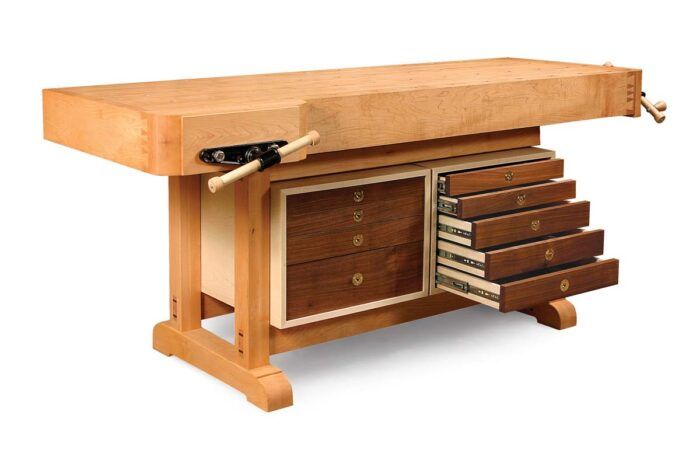
For much of the year, maple trees blend in with the rest of the forest. In the fall, they explode with an array of marvelous colors. Like its leaves, maple lumber can range from plain and unassuming to stunningly expressive. It’s also strong and tough, with tight grain, lovely blond color, and beautiful varieties across North America and Europe.
While hard maple gets most of the attention, soft maple should not be overlooked—or relegated only to secondary components like drawer boxes and internal framework. Soft maple is stronger than its name implies, its color can be very charming, and it’s just as likely as hard maple to have beautiful figure.
As a group, the maples offer an unmatched variety of figure. There is curly striping and quilted bubbles, bird’s-eye and burl patterns, bold streaks of color left behind by beetles, and wild patterns made by fungi, who love maple as much as woodworkers do.
Two categories
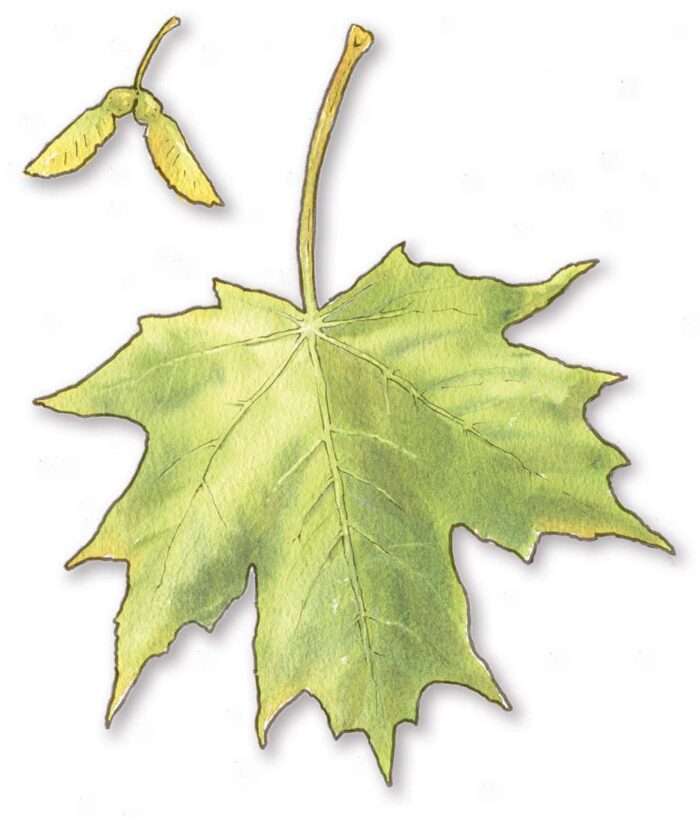 |
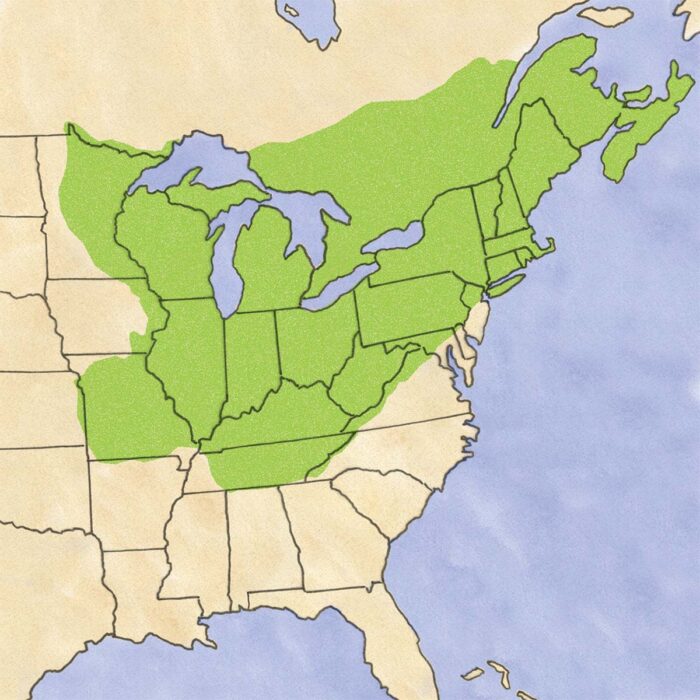 |
Hard maple lumber comes primarily from one species, sugar maple (Acer saccharum), but also from black maple (Acer nigrum). The better hard maple trees grow in the cooler areas of North America, such as the Northeast, upper Midwest, and southeastern Canada. But good trees can also be found in adjacent regions.
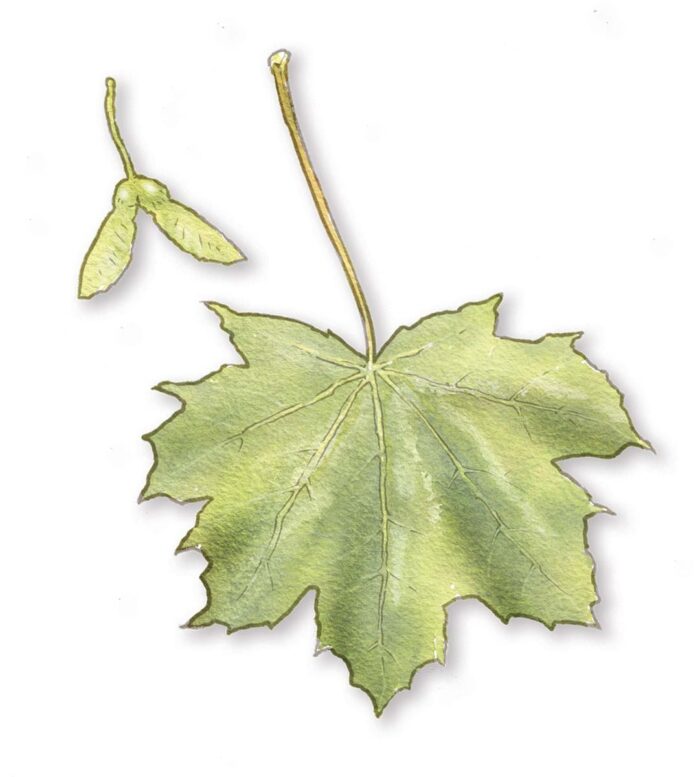 |
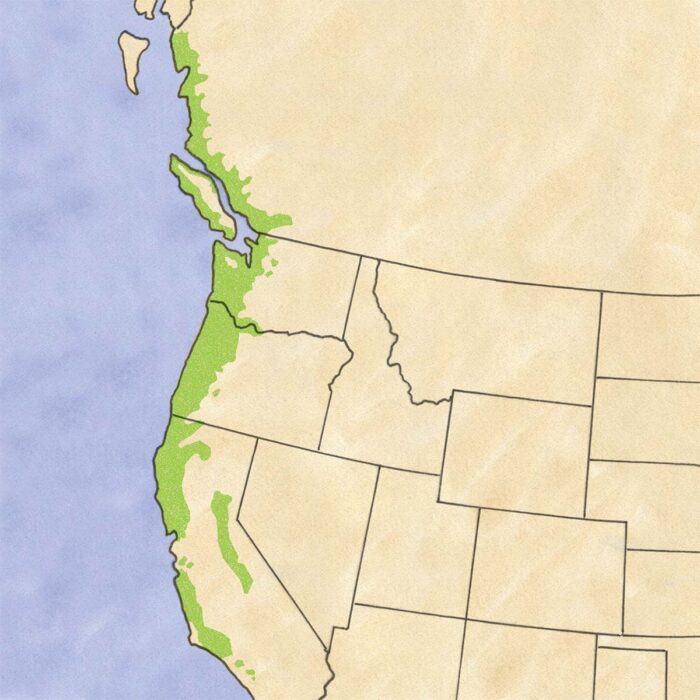 |
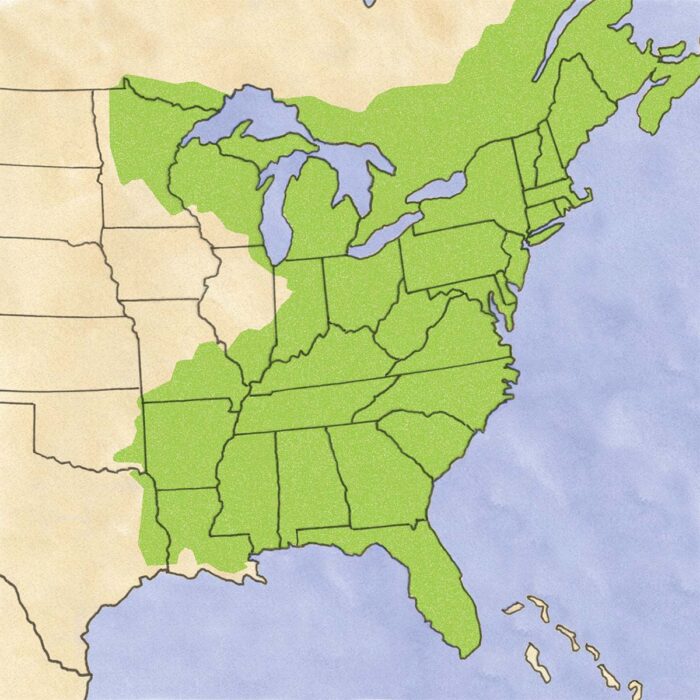 |
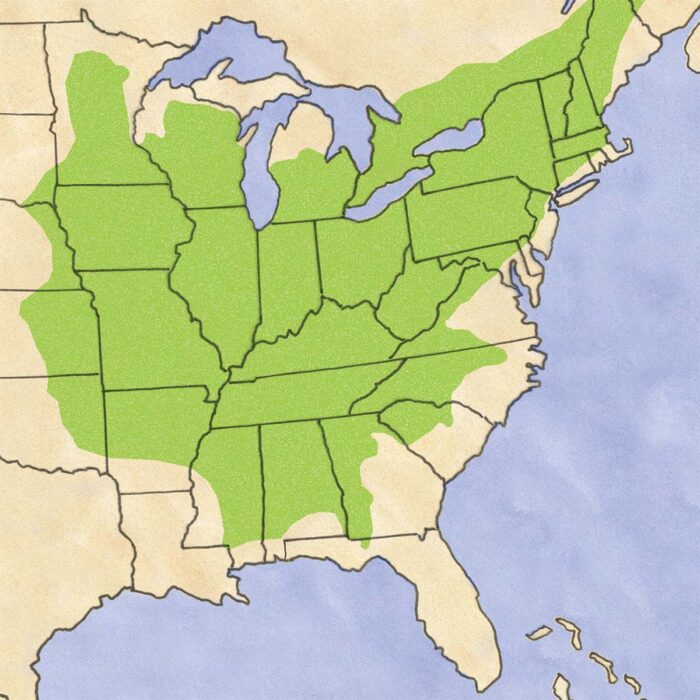 |
Soft maple lumber, on the other hand, comes from any of three species: red maple (Acer rubrum), silver maple (Acer saccharinum), and bigleaf maple (Acer macrophyllum). Red and silver are harvested in the eastern, central, and southern United States, as well as eastern and south-central Canada. Bigleaf maple comes from the Pacific Northwest.
Another soft maple worth mentioning is box elder (Acer negundo). Smaller in size than other North American maple trees, it is not sawn commercially into lumber. However, bowl turners love the red streaks in the log, at least initially, as they tend to fade a bit with time.
 |
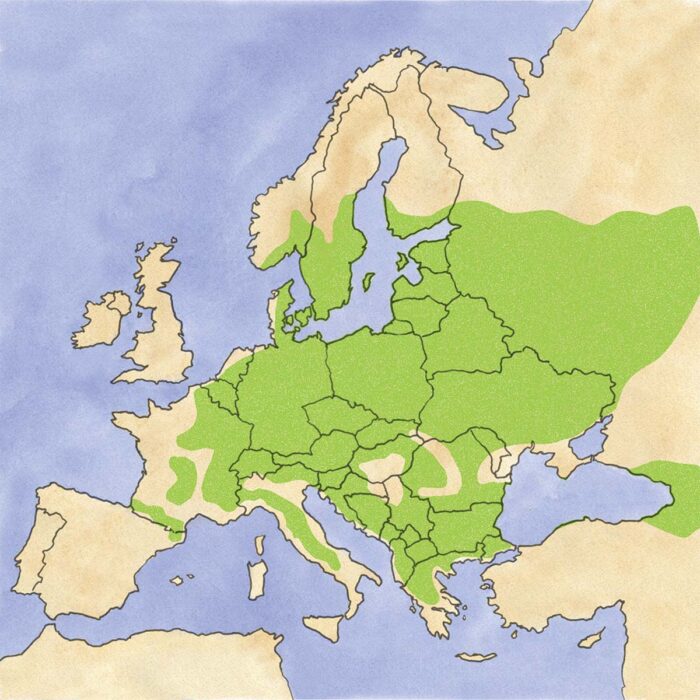 |
Europeans import maple from the U.S. and Canada, but they have their own species too. Norway maple (Acer platanoides) is the most notable, growing throughout Europe, where it is sawn into boards. While its color and grain are similar to hard maple, Norway maple can be termed hard or soft, because its hardness is somewhere between the two.
Telling the groups apart
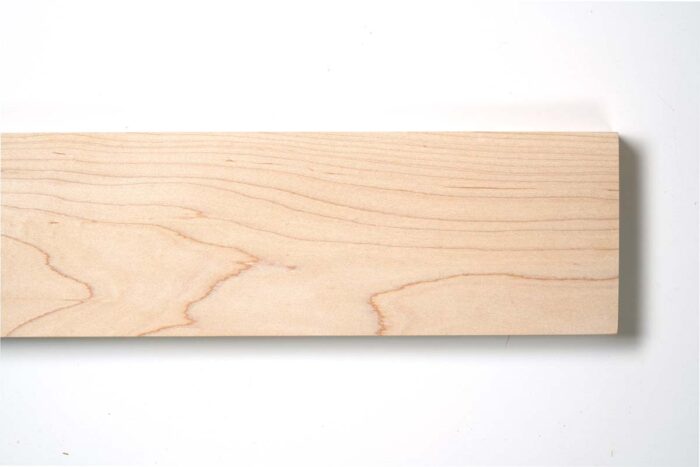
The lumber of soft and hard maples has subtle color differences that can be difficult to distinguish. The color of hard maple is usually lighter and more uniform, while soft maple tends to have a touch of gray, and sometimes brown streaks or spots.
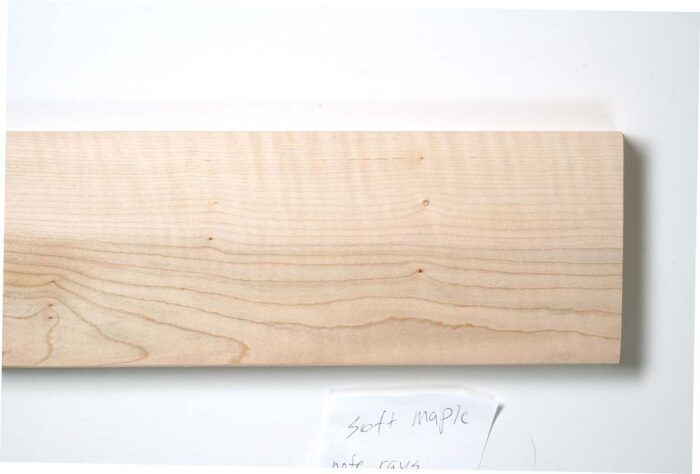
A better way to distinguish the two types is weight and density. Hard maple trees grow more slowly than their soft maple counterparts, so their growth rings tend to be smaller and their grain tighter. Hard maple weighs 44 lb. per cubic foot, while soft maple weighs 33 to 38 lb. per cubic foot, depending on the species. You can weigh the two, of course, but experience will allow you to tell the difference simply by lifting a board at the lumberyard.
If you weigh the lumber, you’ll find the differential to be around 25%. So, for example, at 12% moisture content a 3/4-in.-thick by 6-in.-wide by 6-ft.-long board of hard maple will weigh approximately 8 lb., while a soft maple board of the same size will be around 6 lb.
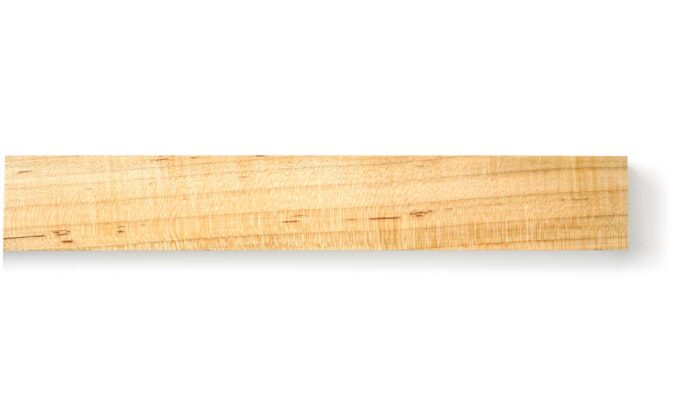
If you don’t have a feel for their relative weights, a close look at the end grain will clear up any confusion. All maples have rays that run perpendicular to the growth rings. These are visible with the naked eye on the quartersawn face of a board. If you look at the end grain with a 10x jewelers loupe, however, you’ll see that hard maple has both thinner and thicker rays, while the rays in soft maple are more uniformly sized.
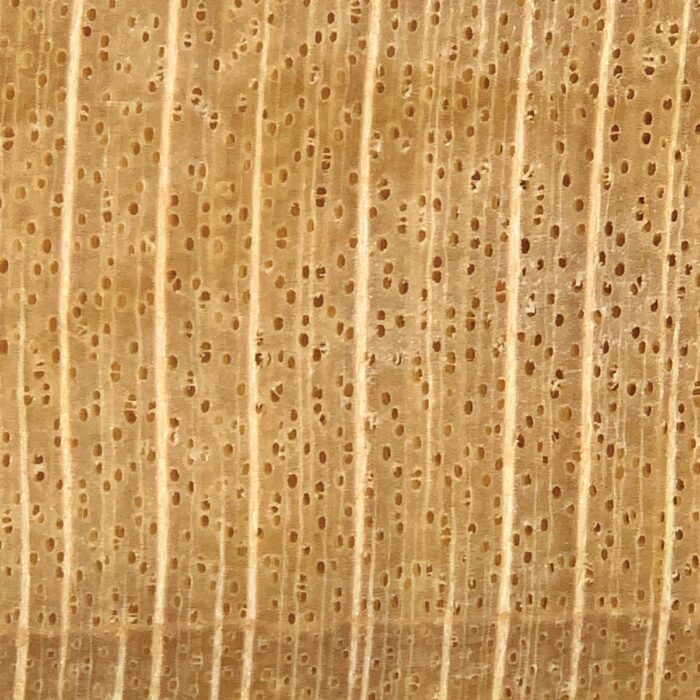 |
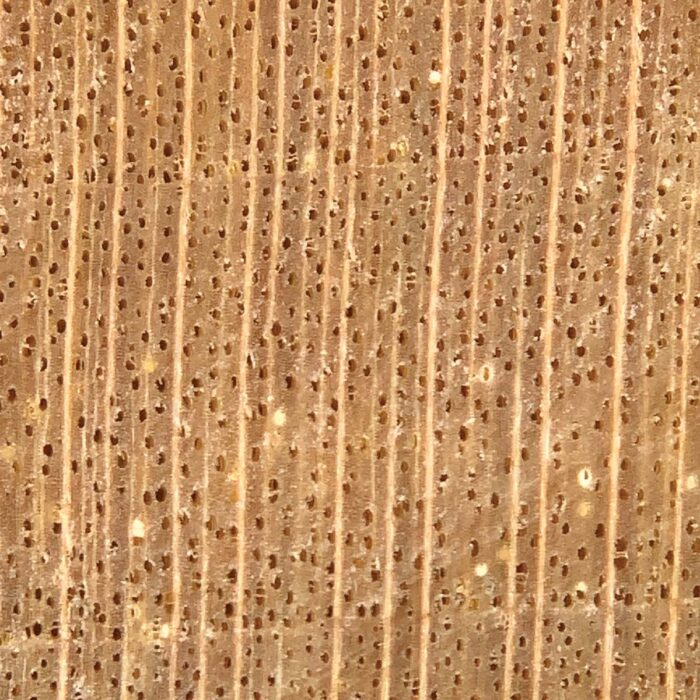 |
Key characteristics for woodworkers
Hard maple is an extremely tough wood; that’s why it is used for gym floors and bowling-alley lanes, as well as workbenches and furniture. Its Janka hardness is 1,450 lb., which falls between white oak (1,360 lb.) and hickory (1,820 lb). (Janka hardness measures the force needed to push a 11.28mm-dia. steel ball into the wood to a depth of half the ball’s diameter.)
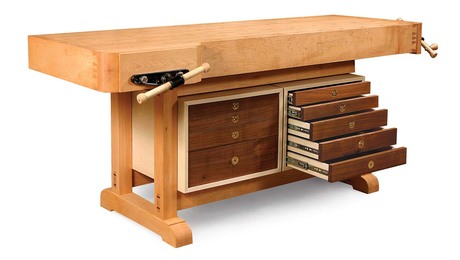
Due to hard maple’s toughness, and maybe its sugar content as well, the table saw and router tend to leave burn marks on it. A faster feed rate, plus sharp bits and blades, will help.
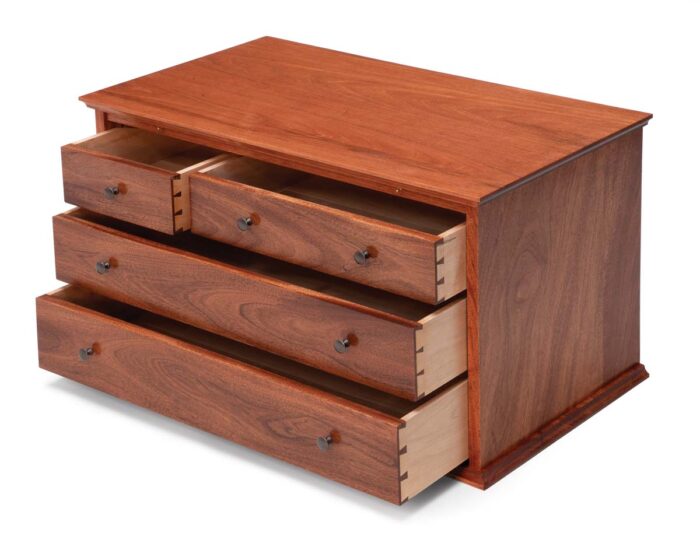
Don’t let the “soft maple” moniker fool you into thinking it is a lightweight, or that it shouldn’t be used for furniture. Its Janka hardness is 950 lb.—exactly the same as cherry—making it plenty strong yet easier to cut than hard maple.
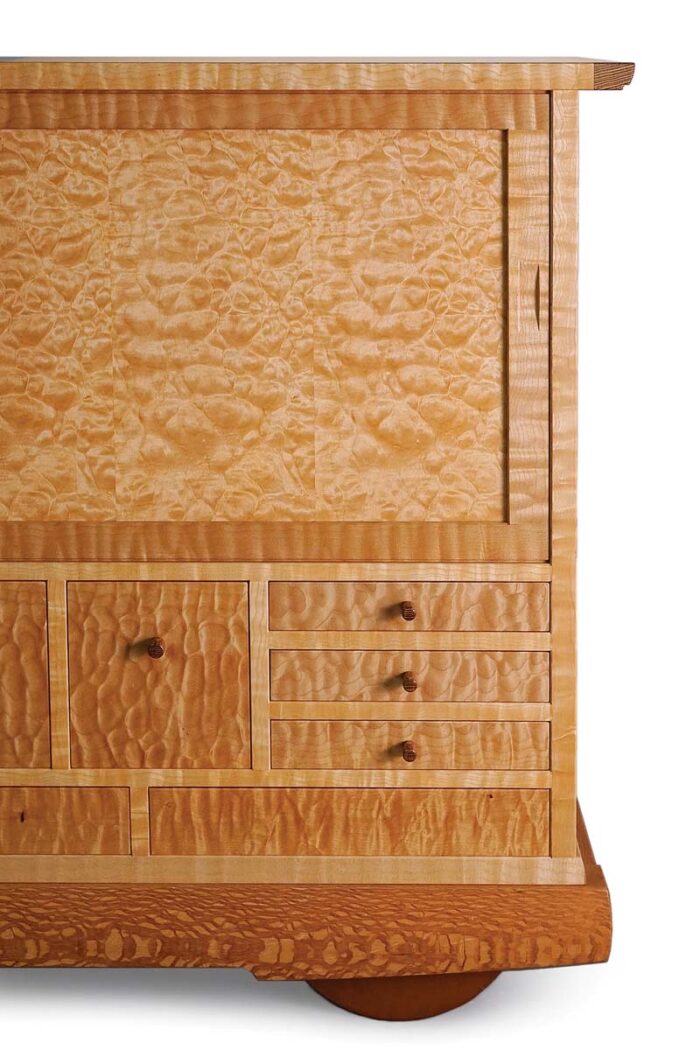
Traditionally, hard maple has been more expensive than soft maple. As more cabinet and furniture manufacturers have turned to the softer subgroup, however, the prices of soft and hard maple have become about the same.
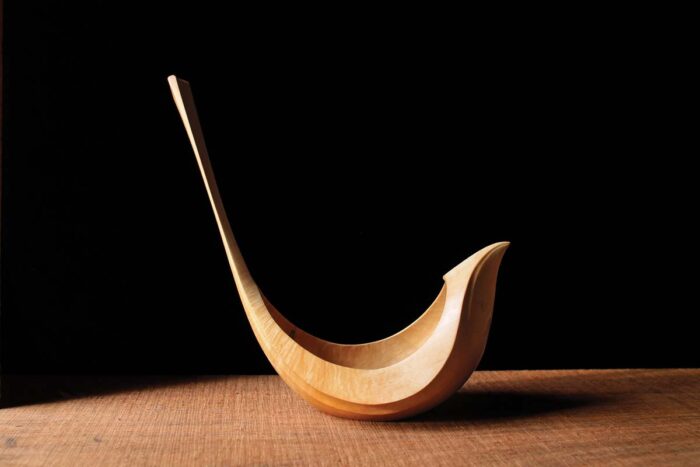
Heartwood vs. sapwood—Like most species, the maples have sapwood and heartwood of distinctly different colors. Unlike most other woods, however, the sapwood of both hard and soft maple is the preferred lumber and draws the higher prices. That’s because maple sapwood is creamy white, while the heartwood is a darker tan with reddish-brown streaks.
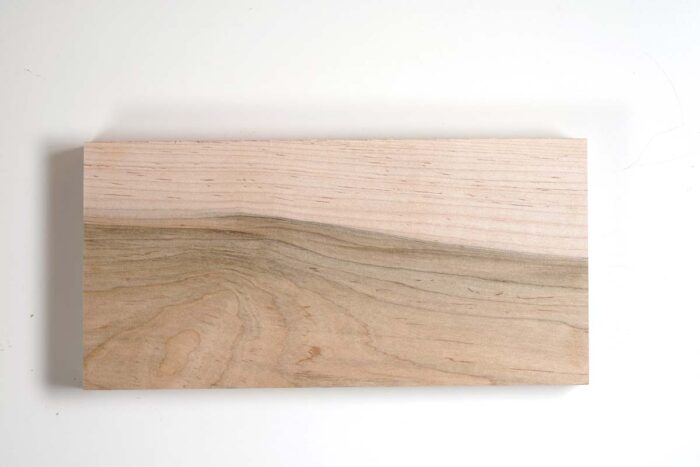
Lucky for us, forest-grown maple trees tend to have a very small heartwood section, sometimes as small as 2 in. diameter. Urban maple trees, on the other hand, tend to have much larger hearts—up to half the diameter of the log.
Having said that, maple’s dark, streaky heartwood offers a rustic look that’s perfect for some pieces.
Inside the amazing world of maple figure
Maple’s myriad grain patterns are prized by luthiers, wood turners, box makers, and furniture makers alike. At least one type of maple figure, bird’s-eye, is seen only in hard maple. Others, like quilting and curl, are seen mostly in the soft maples.
Spalting fungi and ambrosia beetles, on the other hand, leave their unique patterns in both hard and soft maples.
Curly maple—While most of the curly maple in lumberyards comes from red (soft)maple, it can occur in hard maple as well. Curly maple has undulating growth rings, causing the grain to ripple along the length of the log. The rippling grain creates patterns of dark and light stripes on the board, usually perpendicular to its length.
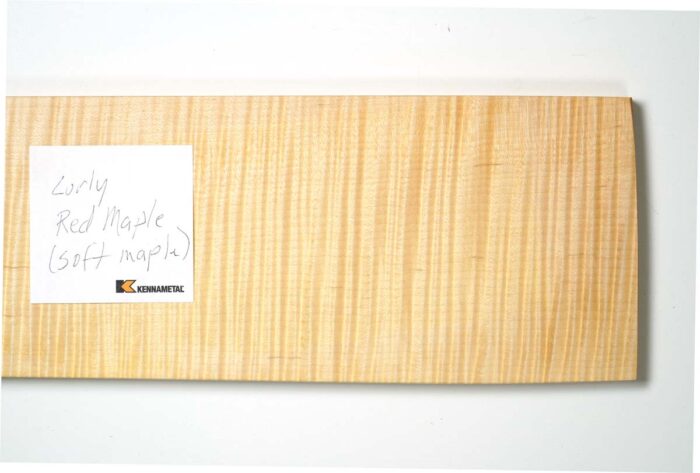
Curly maple stripes can range from narrow and numerous to wide and limited. Subtle differences in striping have given rise to names like fiddleback, tiger stripe, flame, and ripple. These unofficial names are confusing, however, as industry pros can have different definitions for each.
Quilted maple—Quilted maple has a bubbly figure pattern that is prized for the solid bodies of electric guitars. It occurs primarily in bigleaf maple (a soft variety) and rarely in other species.
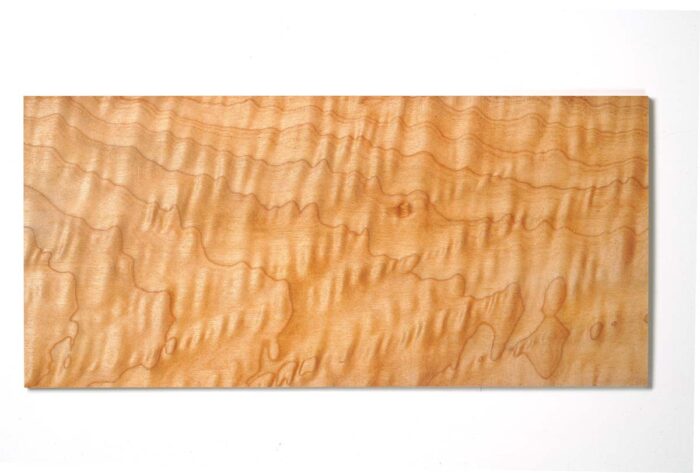
The bubbly stripes can vary from dime-sized to quarter-sized, tightly spaced to farther apart. The more bubbles, the more expensive the lumber.
Bird’s-eye maple—Another popular type of maple figure is bird’s-eye. It develops in a small percentage of sugar maple (hard maple) trees in the upper Midwest, northern New England, and Canada. The figure is thought to be caused by branch buds that didn’t develop. The dimpled eyes range between 1/16 in. and 3/16 in. diameter, and from few and scattered to numerous and dense.
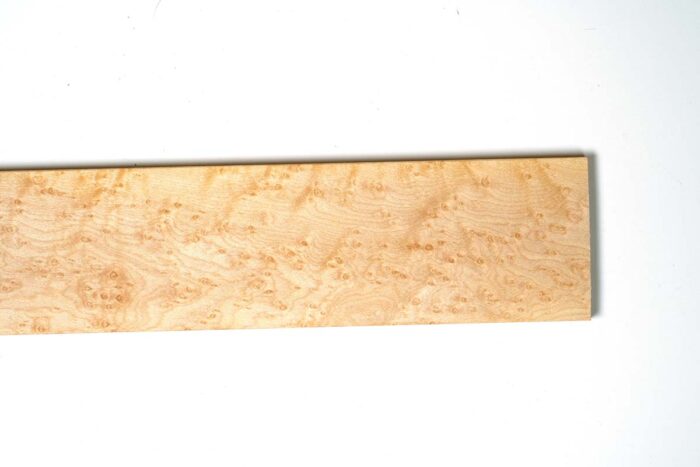
Fungus and bugs—Spalting is internal coloring caused by wood-eating fungi that attack dead trees.
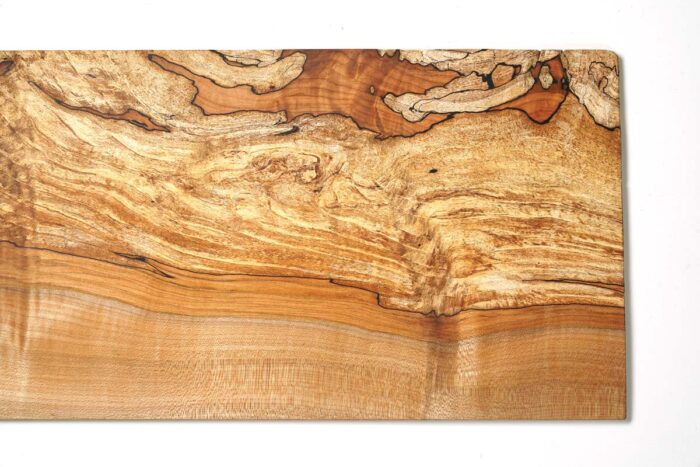
Ambrosia beetles also attack a variety of maple trees, leaving gray and tan streaks scattered throughout the white sapwood. If the little bug holes bother you, you can fill them with epoxy or cyanoacrylate (CA) glue.
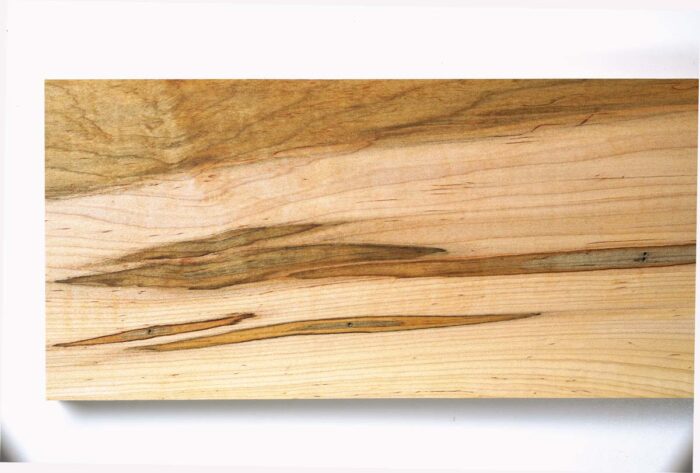
Fine Woodworking Recommended Products

AnchorSeal Log and Lumber End-Grain Sealer

DeWalt 735X Planer

Ridgid R4331 Planer

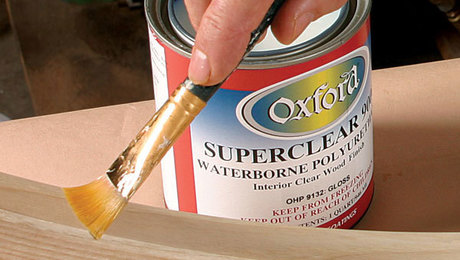
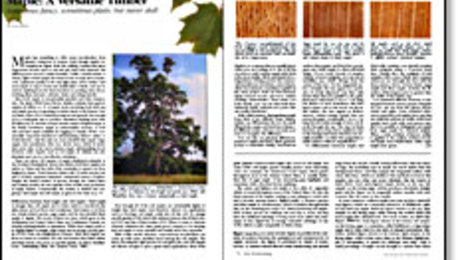
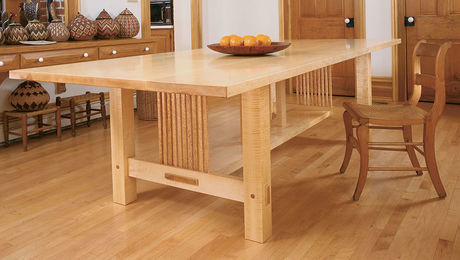



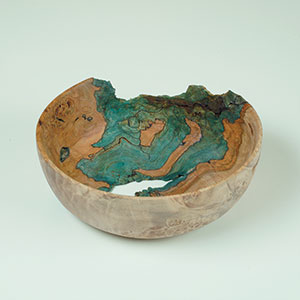
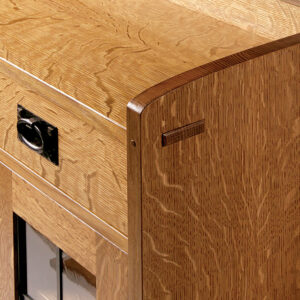
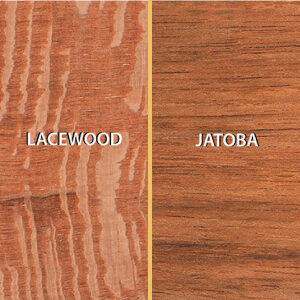















Comments
Great info.. good to know. Thanks!
The PDF is not found (404).
Log in or create an account to post a comment.
Sign up Log in